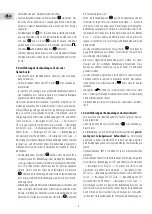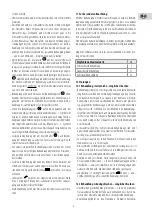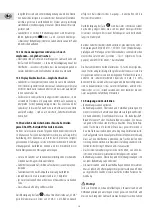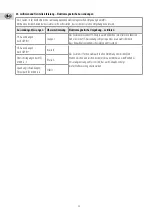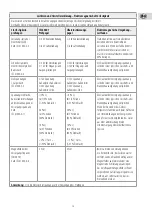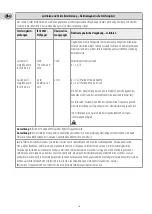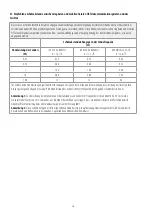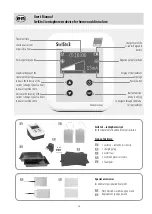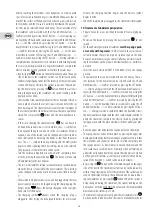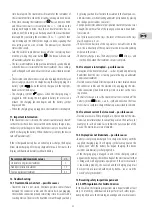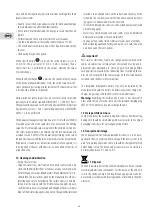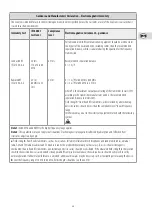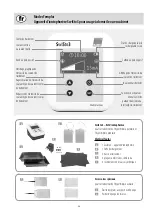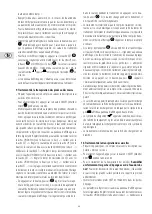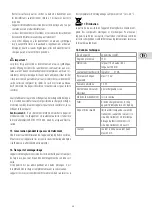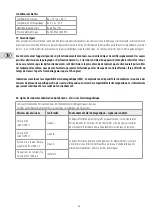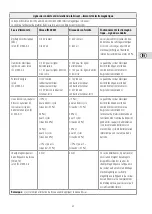
22
ence, and do not require any special instructions with regard to these
inspection activities.
• Visually inspect the device and accessories for mechanical damage
that would adversely affect their functionality.
• Check safety-related labels and the display to insure that they are
legible.
• Perform function check as instructed in the user’s manual.
• Test the iontophoresis current with a load resistance of 1.5 KΩ.
• The SwiSto3 device contains no parts that require maintenance by
the user.
• The housing may not be opened.
When the UP button
is pressed, the current intensity is set to
25 mA. For this, a current of 25 mA ± 2 mA is necessary. Then a
short-circuit test is performed on the output, whereby the values
must not change.
When the DOWN button
is pressed, the current intensity output
of the device gradually diminishes. Here, the current value must de-
crease with each decreasing display increment. The treatment current
is tested with a reference instrument.
During technical safety inspections, an electrical safety inspection
pursuant to the German standard DIN VDE 0751-1; VDE 0751 Part 1
(Repeat Examinations and Tests Prior to Operation of Medical Electrical
Equipment or Systems - Part 1: General Requirements) or DIN EN IEC
60601-1 is to be performed.
The equivalent leakage currents may be up to 1.5 times that of the first
measured value and at the same time may not exceed the limiting
value. The first measured values are given in the enclosed test reports.
The safety inspection must be entered into the technical manual in
accordance with § 6 MPG of the regulations pertaining to the sale of
iontophoresis devices and the inspection results must be documented.
If the device is found to not be functional and/or safe to operate, it is
to be repaired or the user of the device is to be notified of the risks of
using the device.
14. Cleaning and disinfection
• Empty the water trays.
• Wipe the water trays, electrodes and connector cables with a dry
cloth and then disinfect them as follows: use any commonly-used
disinfecting agent such as Bode Bacillol®, Braun Meliseptol® or Oro-
chemie B30. The instructions given by the manufacturer of the dis-
infecting agent are to be followed. The surface that is to be disin-
fected must be wiped with the disinfectant using light pressure,
such that the surface is wet enough and enough of the active ingre-
dient of the disinfecting agent is deposited. The applied disinfectant
solution is to be allowed to dry on the surfaces and they may not be
wiped dry. The reaction/wait time for the above-named disinfect-
ing agents is 5 minutes and must be observed
• The SwiSto3 Iontophoresis Device is to be wiped down weekly with
a disinfecting agent.
• Water trays, electrodes and connector cables are to be disinfected
before each use! (Wipe or spray disinfectant)
• Sponge pockets can be rinsed with warm water, but not with any
kind of cleaning agent and for hygienic reasons, are each to be used
only by one and the same patient.
Important!
Parts such as electrodes, foam pads, sponge pockets and connector
cables are subject to a certain amount of wear and may require re-
placement after prolonged use. Check all parts for damage before
each application, especially the connecting lines. If corroded, the ca-
bles are to be replaced. If the contact plugs on the SwiSto3 become
corroded, send the device in for inspection.
The integrated rechargeable battery may only be replaced by the
manufacturer. Should the battery be defective (will not charge, dis-
charges too quickly), send the device in for inspection/repair.
Warning:
Modifying the SwiSto3 ME device is not allowed! In
order avoid the risk of electric shock, only the included charging plug
(REF 05.19170.002) may be used to charge the unit.
15. Storage while not in use
In order to prevent the SwiSto3 iontophoresis device from becoming
damaged, it should be stored along with its accessories in its original
packaging if not in use for a prolonged period of time.
16. Transport and storage
When transported, the SwiSto3 iontophoresis device is to be pack-
aged such that it is protected from damage. If the device is not to be
used for a prolonged period of time, it should be charged completely
before being stored. The device and accessories are to be stored in a
dry location between 0 °C and +40 °C.
17. Disposal
The non-accessible part of the SwiSto3 iontophoresis device contains
electrical and electronic components. For this reason, at the end of its
service life, the device must be brought to an appropriate waste dis-
posal site in accordance with local regulations or returned to the man-
ufacturer.
Summary of Contents for SwiSto 3
Page 27: ...27 ...

